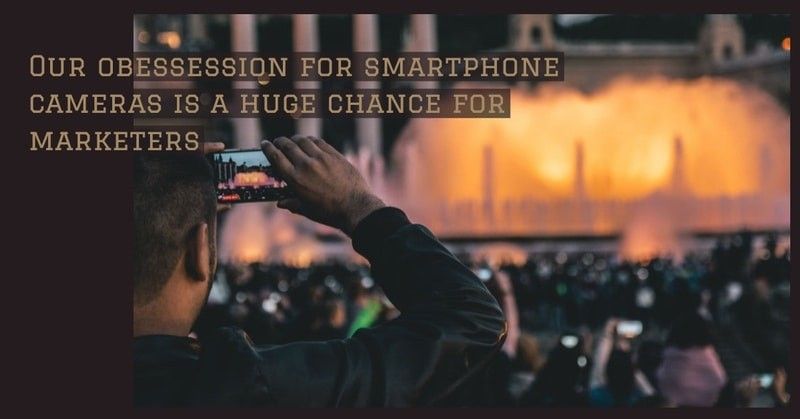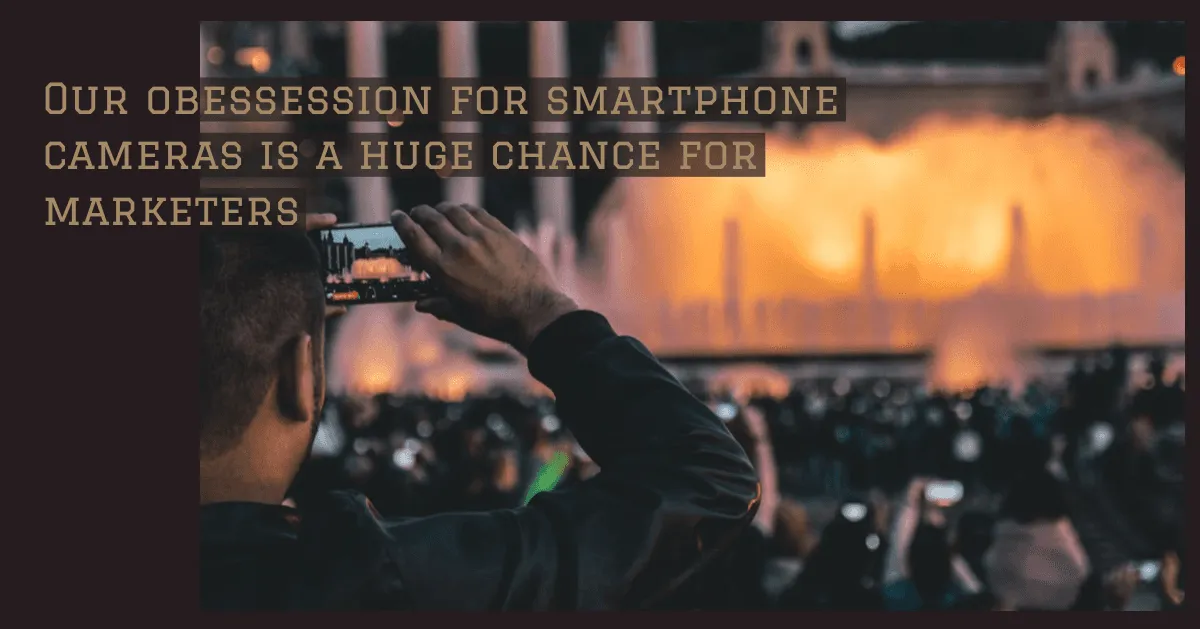Our obsession with smartphone cameras is a massive opportunity for marketers
Get monthly LoyJoy News with Product Updates & Success Stories.
Unsubscribe anytime.

Our obsession with smartphone cameras is a massive opportunity for marketers
Four out of five photos are taken with a smartphone. In 2017 alone, more than a trillion digital photos were taken. A tremendous chance for marketer to accelerate their brand marketing. We have compiled 6 use cases.
Due to easy access and high quality of smartphone cameras, the focus of social networks has shifted to photography. Especially for Millenials Snapchat and Instragram are of far greater importance than Facebook and WhatsApp. People love to share pictures with their friends and the world. The platforms drive usage by hooking users via social proof through with likes and followers.

What is in the “snap” trend for the business world?
Augmented Reality
With the Pokemon Go hype in 2016, the concept of Augmented Reality became widely popular. On Instragram and Snapchat users can choose from a selection of filters to enhance their pictures. Further animated backgrounds and face masks are increasingly popular. At Facebook’s conference, F8, CEO Zuckerberg has announced a Roadmap focusing on AR.
An Alibaba store in China pushed the AR concept to a new level for retail. A camera recognises the customer and makes suggestions which style of clothes would suit her or him. If liked, the clothes get delivered to the customer within the store to try them on.
Brands can use augmented reality to enhance the user experience, for example by providing additional information or putting the product in the center of a story. Fanta offered branded Snapchat filters for the second time in its recent Halloween campaign.
Facial Recognition
Facial recognition is the evolution of the digital fingerprint. As one of iPhone X’s key features, facial recognition technology via smartphone camera has gained a lot of attention. It enables to unlock the smartphone by just looking at the screen. Facebook has recently built a new ‘AI Camera Team’ that is working on extending the possibilities of the smartphone camera for Facebook users. Experts are quite sure that unlocking the phone is just the beginning of facial recognition, there are loads of opportunities for the future. Think about authorising orders or payments simply with a smile 😀💸
User-Generated Content (UGC)
What would have a bigger influence on you when considering a purchase: An advertisement of the brand or seeing a consumer enjoying that particular product? As social beings, we heavily rely on our peers. However, User-Generated content (UGC) is still underestimated by many marketers. According to a recent survey by Olapic, “56% of the participants are more likely to buy a product after seeing it featured in a positive or relatable user generated image”.
Today, people share their whole life in photos on Instagram and showcase their consumerism, because they either love to share their joy with their friends or impress others. These sorts of pictures are often taken in a very authentic way and fit perfectly for brands to repost them. New artificial intelligence technology in the field of image recognition enables to automatically detect and describe an image’s content. Think about an automatic detection when a specific brand is visible in user generated posts.
Influencer Marketing
The idea of using influencers on Instagram or other relevant platforms has become a common marketing pratice. Brands can decide how the brand is to be portrayed in the influencer’s content which is very useful when a new campaign is launched or a specific affection with the brand is to be created. Furthermore, the correct target group can be selected precisely with the suitable influencer for that group. As a perfect example German accessory startup “Kapten & Son” has written its success story through influencer marketing. They were able to create the feeling of “must-have” as well as a high affinity with the brand. In order to get there the company has cooperated with influencers from different backgrounds. Both former soccer star Christoph Metzelder and winner of the Eurovision Song Contest, Lena Meyer-Landrut, have posted pictures with a Kapten & Son watch on their Instagram. As a result of Pamela Reif´s (over 3 Million Followers) post, the servers collapsed. Head of Influencer Marketing De Sousa points out that influcencers with a smaller following are also essential because they have a closer connection to their followers than the big players.
Loyalty
Today companies are able to create a new connection to their costumers through their smartphone camera. Consumers can scan a QR-Code or send a snap of a proof of purchase and be rewarded for their loyalty. Why would they do it? To take part in a loyalty program and get an exclusive access to special offers. This way, brands incentivise the consumer to buy more and more frequently, as well as creating a brand affection through immediate personalised rewards. The promise of an exclusive access enables the company to send personalised offers based on previous purchases. The result is a long-term affection and a very effective personalized marketing.
Image search
Search engines and shopping platforms like eBay enable users to send in a snap instead of a text or voice search. Through artificial intelligence technology the results present similar images or information about the content of the photo. For example, fashion brands can profit from image search and present similar items to their customers.